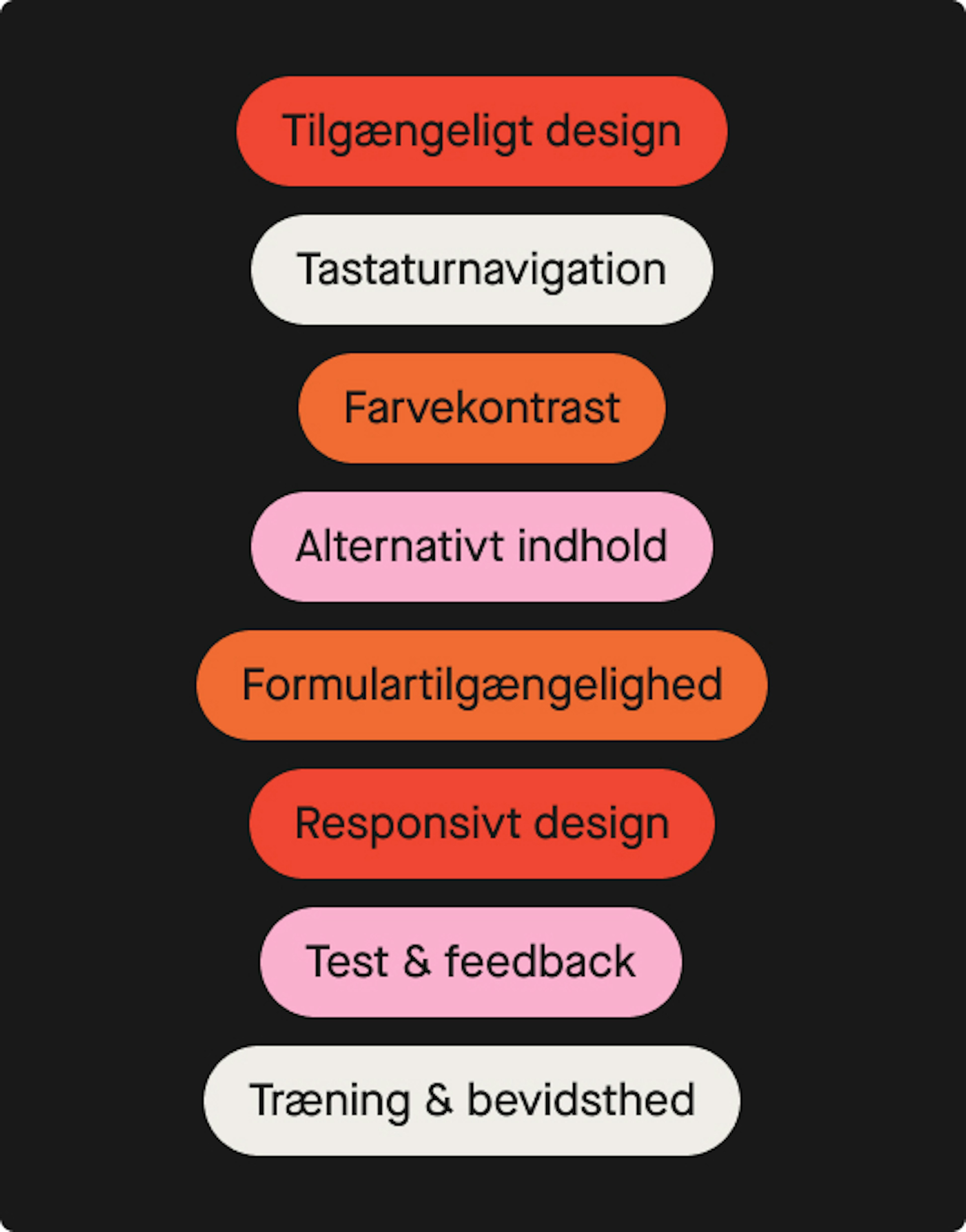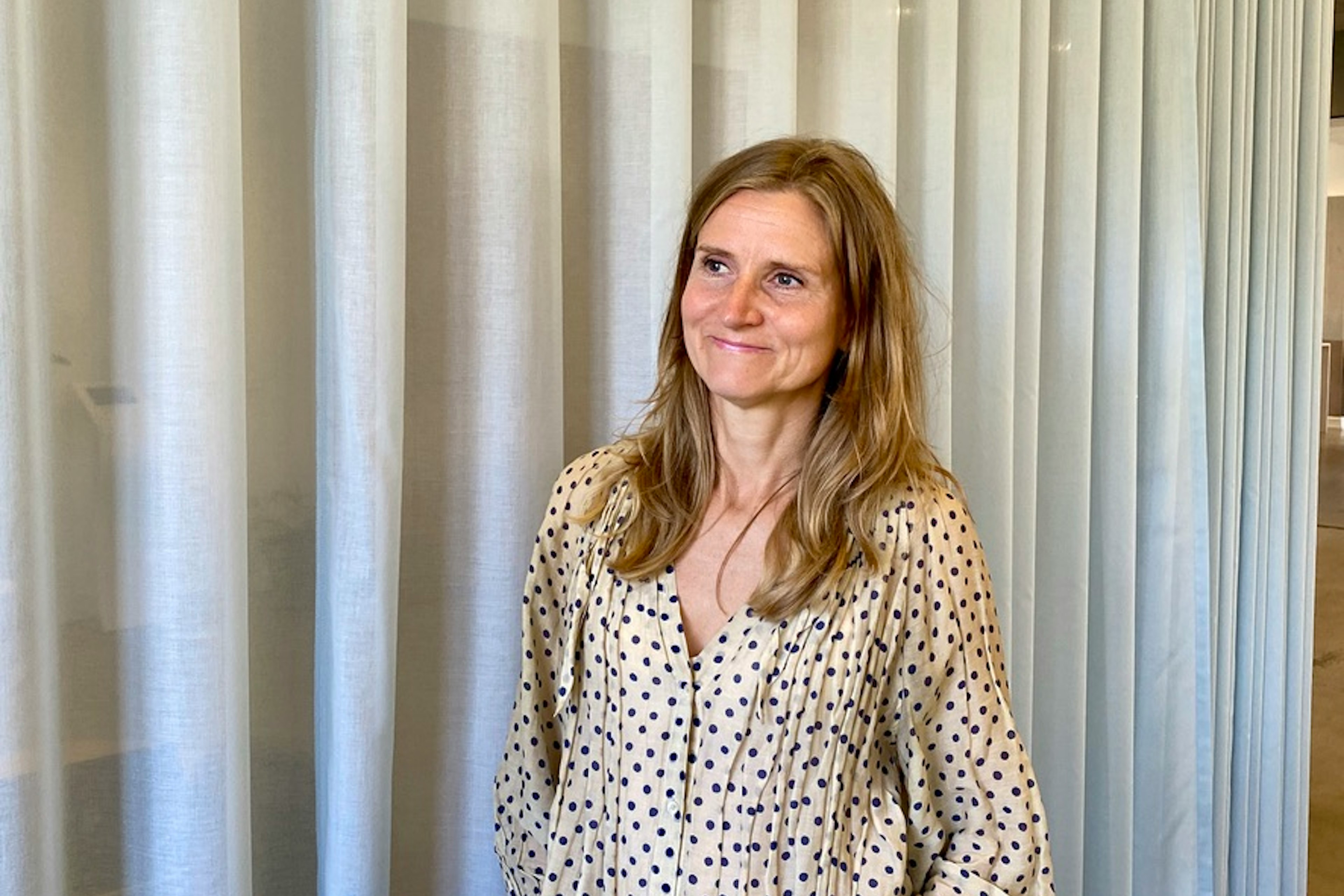Accessibility and Inclusive Design
When did you last check the accessibility on your website and made sure that everyone was included? Maybe it was long ago - maybe it never happened. And you are not alone. Digital accessibility is unfortunately an area that is still way behind. While we are becoming increasingly aware of the needs in physical spaces for example ramps for people in wheelchairs or tactile pavements for people with vision impairments, there are still way to little help for the 23% of the Danish population who are unable to navigate freely in the digital space (DST, 2023).
Web Accessibility before and now
By June 2025, the new EU Accessibility Act will be set in motion: A directive that will define new digital accessibility standards for all companies with more than 10 employees and/or a yearly turnover of more than 2.5 million Euro. This means that all companies within this definition will need to live up to several accessibility requirements. But what is web accessibility even, and where does it come from? Here is a brief walk-through.
In 1995, the Web Accessibility Initiative (WAI) was founded by the World Wide Web Consortium (W3C) – just a few years after the internet itself saw the light of day. The vision of WAI is clear: that the internet and related technologies should be accessible, so everyone no matter their disabilities can participate equally in the digital world. With this vision in mind, the W3C formulated the first guidelines for digital accessibility WCAG 1.0, to secure the development of accessible solutions. Since then, WCAG 1.0 was replaced by WCAG 2.0 (in 2008), and in 2018 came the newest version WCAG 2.1, which is also the point of departure for the EU Accessibility Act.
WCAG 2.1 functions as a global standard for accessible web design and content, and it divided into 3 levels – A, AA and AAA – where the latter is the completely accessible site. Nevertheless, it is the AA categorization that companies should be compliant with. It includes requirements such as good color contrast, organizing of content under clear headers, and consistent navigation elements throughout the site.

9 things you should be aware of
Accessible design: Your website should have a design that is compatible with assistive technologies like screen readers and other alternative input units. This includes the use of correct HTML-semantics, text alternative for non-text content such as pictures, as well as securing a logical reading order.
Keyboard navigation: Users should be able to navigate through the website by just using their keyboard. This means that all interactive elements should be reachable and usable without using the mouse.
Colour contrast: Make sure that there is enough colour contrast between text, elements and background to make content readable for all users.
Alternative content: Provide alternative formats to content such as video transcriptions, sound descriptions, and accessible PDF-files to accommodate different user needs.
Alternative picture text: Add descriptions for picutres, so users with visual impairments understand, what the picture represents. A screen reader will read the alternative text out loud.
Form accessibility: Forms should be created in a wat that is easily understood and filled out by all users. This includes the correct use of form labels, error identification, and clear instructions.
Responsive design: The platform should be responsive and adjust to different devices and screen size, which ensures an adaptive user experience across desktops, tablets and smartphones.
Test and feedback: Test the platform regularly with both automated and manual tests. It could also be by people with disabilities to properly identify and solve accessibility issues.
Training and consciousness: Make sure that the responsibility for accessibility is anchored in your entire team, and that everyone knows about the accessibility standards. From design to development, testers, and editors. Everyone has a responsibility, and should understand how their part influences the accessibility of the website.
By focusing on these aspects you can enhance the accessibility on your website, and thereby offer a more inclusive experience for all users, as well as complying with the EU Accessibility Act.


